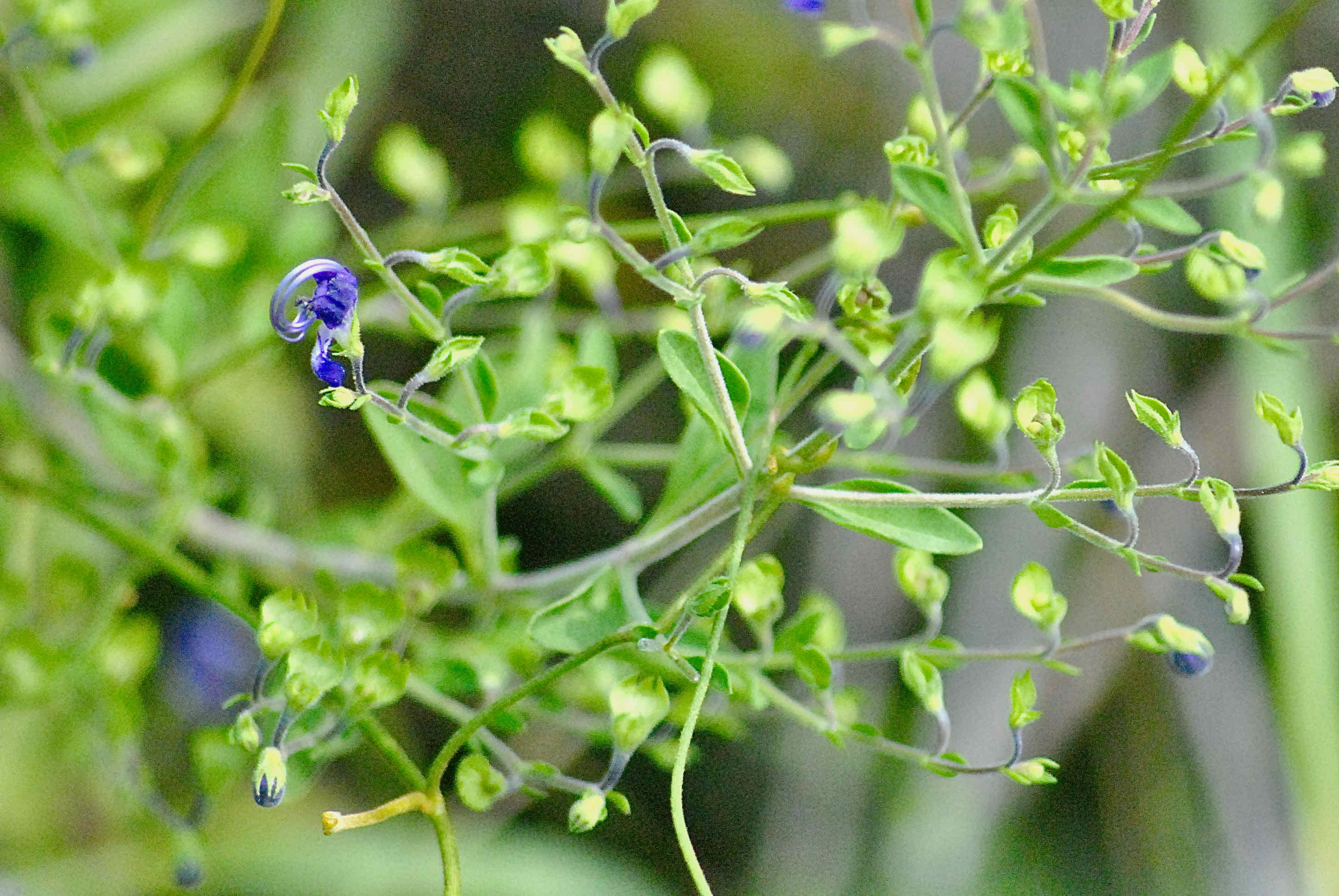
orked bluecurls, photographed at Seacrest Scrub Natural Area, Boynton Beach, Palm Beach County, in September 2013.
The flowers are small and the foliage is ordinary, but forked bluecurls, Trichostema dichotomum, still manages to grab one's attention with its extraordinary looks.
The secret is the flower's delicate design and range of blues, from deep, deep to nearly white. The generous number of buds and open blooms makes up for their individual lack of size. It won't attract an exotic (or even common) species of butterfly and it can be weedy, but its unusual looks and easy-to-meet growing requirements makes forked blue curls a popular item in wildflower gardens.
Forked bluecurls is a Florida native, found in most counties north of the Keys. It's also common throughout eastern North America, into Ontario and Quebec and as far west as Iowa and Texas. It is a member of the mint family, Lamiaceae; the leaves when crushed are aromatic. The flowers are somewhat similar to another member of the mint family native to Florida, large-flowered rosemary. It is an annual, flowering summer into late November, here in Florida. (The photos at the bottom center and right were taken in early February at Prosperity Oaks Natural Area in Palm Beach Gardens. The plant was blooming, though sparingly so.) Its leaves are arranged opposite another along the stem, elliptically shaped and smooth along the edges. Stems are square and hairy.
But what really distinguishes forked bluecurls are the flowers, and their long, curled stamen that bring to mind long, long eye lashes. The first part of the plant's scientific name, trichostema, means hair-like stamen (dichotomum means forking in pairs).
Thing is, those curled stamen aren't just for show. They're the male parts of the flower and sit above the throat where the nectar is. Any bee who lands for the sweet stuff almost certainly will get a coating of pollen on her back, which will be carried to the next forked bluecurls flower. The flowers, in fall, eventually produce a seed-bearing nutlet.
Forked bluecurls is rather small, growing maybe a foot-and-a-half tall and just as broad, although we have see some sources that say it can get much taller. It will attract bees in large numbers, but as noted earlier, butterflies not so much.
Like other members of the mint family, the stems of forked bluecurls are covered with fine hairs and oil-producing glands that give the plant a sticky feel. The plant, like its cousins, also produces massive numbers of seeds, so gardeners don't have to worry about next year's sowing. In fact, it can take over a garden if left unchecked. Because it's an annual, it only reproduces by seed.
Forked bluecurls likes well-drained sandy soils, and grasslands, meadows, fields and pinelands are preferred habitat. It will also colonize newly disturbed sites, natural or man made. Indiana lists it as rare; Michigan, which calls it bastard pennyroyal, classifies it as threatened. Other common names include blue curls and narrowleaf blue curls.
Seacrest Scrub Natural Area



